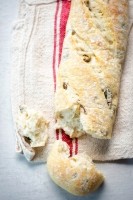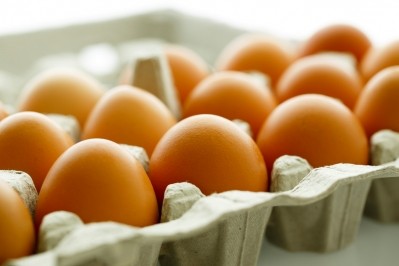Sugar vs fat reduction in cakes and biscuits: ‘It’s not one or the other’

Queen Mary University London is calling on Public Health England (PHE) to incorporate cakes, biscuits, and other solid sweet categories in its calorie reduction programme. Cakes and biscuits are currently included in PHE’s sugar reduction scheme.
The call to action was prompted by a new study published in nutrition journal Nutrients. Researchers surveyed close to 1,000 own- or private-label packaged cake and biscuit products sold in leading UK supermarkets: Aldi, Asda, Lidl, Morrisons, Sainsbury’s, The Co-op, Waitrose, and Marks and Spencer.
The study concludes that these packaged products contain “a considerable amount” of fat and saturated fat, which positively correlate to the products’ energy density. Sugar content, however, does not.
The university argues that reducing fat content could result in a “substantial” reduction in calories, and consequently result in an overall reduction of obesity and cholesterol in the UK.
Cutting excess calories and added sugar
As it stands, cakes and biscuits are included in PHE’s sugar reduction programme, but not in its yet-to-be-finalised calorie reduction scheme.
The calorie reduction programme is part of PHE’s obesity strategy, which aims to halve obesity rates by 2030. This latest scheme, which is still under development, is targeting a 20% calorie reduction in processed foods by 2024. The programme implicates a number of food categories, including ready meals, pizzas, and savoury snacks.
Obesity in the UK
Latest data from the national child measurement programme (NCMP) reveal that 2.4% of children aged 4 to 5 years, and 4.2% of children aged 10 to 11 years, are severely obese.
Prevalence of severe obesity among children aged 10 to 11 years has increased from 3.2% in 2006-2007 to 4.2% in 2017-18.
According to NHS data, 29% of adults classified as obese, marking a 26% increase on 2016 figures.
20% of year 6 children are classified as obese, with prevalence twice as high in the most deprived areas, compared to the least deprived areas.
The sugar reduction scheme, which first launched in 2016, challenges food manufacturers to reduce the sugar content of certain high-sugar products, such as cakes and biscuits, by 20% by 2020. PHE’s strategy aims to cut obesity rates and save the NHS £265m (€298m) over the next 10 years.
But in May last year, when PHE published a progress report, it was revealed that food manufacturers had fallen short on their first-year

target. “The report showed that the progress wasn’t [sufficient]. It was only 2% compared to their 5% target,” lead author Roberta Alessandrini told FoodNavigator.
Targeting fat and sugar at the same time
Queen Mary University London is therefore asking the government to include biscuits and cakes in both public health schemes.
“We think that reducing fat is a more effective way [of reducing total calories]. If PHE also includes cakes and biscuits in its calorie reduction strategy, this could lead to more progress in terms of calorie reduction,” said Alessandrini.
And there is a precedence, she continued, citing the ‘breads with additions’ category. This category, which includes value-added products such as ciabatta with olives, is included in PHE’s salt reduction programme, as well as its calorie reduction scheme.
“We think the same could also happen for cakes and biscuits. Sugar reformulation should be implemented because reducing sugar is a very important public health target. But to reduce calories, it is also important to reduce fat.
“It’s not one or the other. We want to reduce sugar and we want to reduce fat at the same time, to make sure that these products can be as healthy as possible.”
Swapping out saturated fat
For the researchers, the best way to reduce total fat and saturated fat content is to increase the amount of fruit, vegetables and whole grains. “These ingredients are high in fibre, low in calories, and would reduce the energy density of the product,” said Alessandrini.

Whatever the replacement, Alessandrini is convinced that some manufacturers have the reformulation know-how.
Indeed, survey results revealed a large variation in the total and saturated fat content within each biscuit and cake category. Shortbread biscuits, for example, were found to contain the most total fat and saturated fat, yet significant variations were present within this category.
“It is possible to see that given the same amount of total fat, some [shortbread] manufacturers have removed saturated fat, or lowered its content it a minimum,” said Alessandrini.
“So, it is possible to switch out [saturated fat]…some manufacturers are very progressive and doing lots of reformulation to improve the nutritional quality of their products. Some are basically doing nothing.”
Source: Nutrients
Published online: 28 May 2019
‘Reformulation and Priorities for Reducing Energy Density; Results from a Cross-Sectional Survey on Fat Content in Pre-Packed Cakes and Biscuits Sold in British Supermarkets’
DOI: https://doi.org/10.3390/nu11061216
Authors: Roberta Alessandrini, Feng J. He, Kawther M. Hashem, Monique Tan and Graham A. MacGregor
























